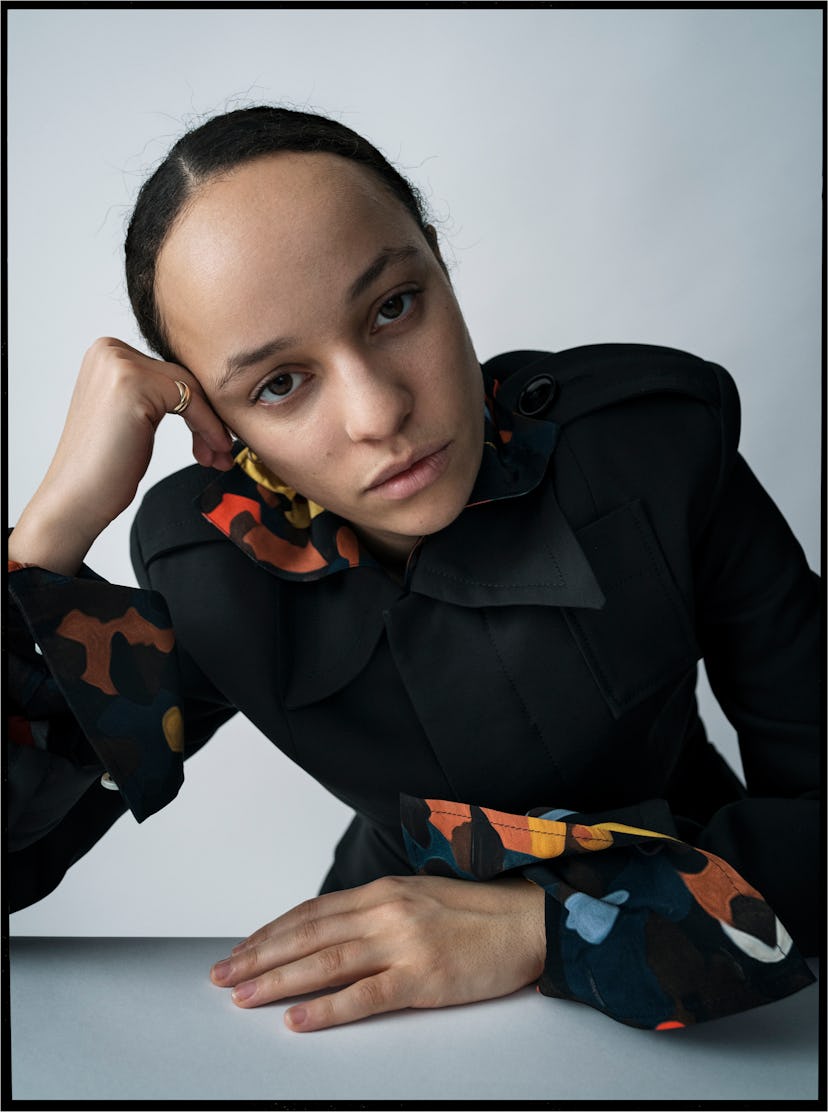Grace Wales Bonner’s MoMA Show Honors Spirit Movers, Past and Present

For the past year and a half, Grace Wales Bonner has been visiting the Museum of Modern Art in New York City to comb through its nearly 220,000-piece collection. Whether that meant meeting with curators to look at specific pieces—ranging from old iPods to Picasso paintings—or flipping through catalogs online, the London-based designer has delved deep into the vast range of the Manhattan institution’s artworks and ephemera. The result of this “slow, deep work,” as Wales Bonner described her research process on a recent morning, is the exhibition “Grace Wales Bonner—Spirit Movers,” on view at MoMA from November 18 to April 7, 2024. For the show—part of MoMA’s Artist’s Choice program, which taps notable creatives to curate an exhibition culled from the museum’s collection—Wales Bonner picked works from Terry Adkins, Betye Saar, Man Ray, and many more artists from all over the world.
“I was thinking about materials that have some kind of past life, or the passing of time being evident in our works,” Wales Bonner said during a preview of the exhibition. “And I was quite interested in how objects can transform and become something else, or how certain materials can be reinvented or repurposed to have a new life to them.”
A theme of rebirth is evident in Wales Bonner’s clothing brand, which has led her to become an industry favorite. The 33-year-old’s carefully tailored collections are informed heavily by her own personal research, a favorite activity of hers (before pursuing fashion design, she wanted to be a historian). Literature, music, critical theory, Black identity, and African and Jamaican craft techniques all serve as sources of inspiration for Wales Bonner, who is of British and Jamaican descent. The designer’s proclivity for genre- and boundary-bending is also evident in the various projects she takes on—from her wildly successful “It” sneakers for Adidas and the uniforms she designed for the Jamaican men’s and women’s soccer teams to her popularity with musicians and artists. (Kendrick Lamar and Westside Gunn have both referenced her designs in their raps; she’s created a zine with the singer Sampha).
Sound, in fact, is a central theme in the MoMA exhibition, which has an accompanying book titled Grace Wales Bonner: Dream in the Rhythm—Visions of Sound and Spirit in the MoMA Collection. “Gesture and the repetitive, rhythmic way of making are embedded in the artworks,” she said, pointing to Adkins’s 1995 piece, Last Trumpet, which features four massive brass and sousaphone trombone bells. “Terry Adkins—whose work as an artist has really inspired me—said he made this work at scale for angels to play them.”
MoMA curator Michelle Kuo and Grace Wales Bonner stand in front of Terry Adkins’s Last Trumpet, 1995.
But the heavenly feeling in the room stops there: “There’s also a darkness to these works, and in terms of ‘spirit movers,’ there’s something quite disruptive about that,” Wales Bonner added. “It can be assaulting to you.” Indeed, rusted nails, murky colorways, and dangerously sharp materials are seen on many of the works featured in Spirit Movers. Take, for example, Mathias Goeritz’s Message Number 7B, Ecclesiastes VII: 6, a gold foil piece covered in jagged nails. “I was thinking about materials that have a very specific sonorous quality.”
Mathias Goeritz, Message Number 7B, Ecclesiastes VII: 6, 1959.
In person, the designer is petite in stature and soft-spoken, with a mind that seems to work like a philosopher’s. It makes sense, as Wales Bonner has spent the greater portion of her life researching for fun. “It has always been a discovery, and I’ve used it as a way to learn more about myself or where I come from,” she said. As it turns out, the 18-or-so months Wales Bonner spent digging through MoMA’s collection is actually part of a larger research practice she’s explored over the past four years. “There is a theme of looking at sound through different mediums, and it’s been quite ongoing,” she said. “It’s been interesting to work a very different pace [compared to fashion], which I also love and I need that pace for productivity. But for me, this is a more foundational theme that’s timeless in terms of what I’m interested in exploring."
Henri Cartier-Bresson. Washington, D.C. 1957.
Benjamin Patterson. Overture (Version II), Overture (Version III), and Septet from “Lemons.” c. 1961.
As for whether the artworks she’s studied will be sources of inspiration for her next collection, Wales Bonner responded with nervous laughter. “Because I’m thinking about a lot of works together to create a world, I’m not sure it’s so direct in the sense of one work [inspiring me],” she added. “It’s more like a combination of different inputs inspiring something. But I’m drawn to a sense of style, a sense of elegance, a sense of tailoring and gesture that you probably would recognize in my work.”